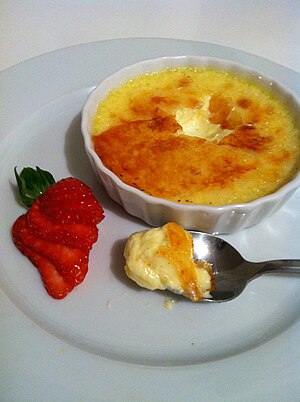How to Make Garlic Cream Sauce
Three Methods:Assembling Ingredients for a Garlic Cream SauceCooking Garlic Cream SauceUsing Garlic Cream Sauce on Food
Garlic cream sauce can be used on everything from pizza to seafood to pasta. Whether you want to make a batch for a special dinner or gathering you are hosting, or you look forward to making it a staple in your weekly menu planning, a garlic cream sauce can be simple and delicious. It only requires a few ingredients and minimal cooking time. Make garlic cream sauce by gathering the best ingredients, combining those ingredients and then using the sauce on your favorite foods.
Method 1 of 3: Assembling Ingredients for a Garlic Cream Sauce
-
1Purchase some fresh garlic. A great head of garlic feels heavy for its size and is covered in thin, papery skin that does not have any soft spots.
- Look for garlic in the produce section of your grocery store, at a farmer's market or vegetable store.
-
2Buy a container of heavy cream. For a garlic cream sauce that serves 4 people, you will need at least 2 cups (16 oz.) of heavy cream.
- Look for heavy cream in your grocery store. Do not mistake heavy cream for whipping cream, and avoid using a heavy cream substitute. For the best garlic cream sauce, a regular heavy cream is necessary.
-
3Buy a stick of butter. Whether you buy salted or unsalted butter is a matter of your personal preference. Either sort of butter will work for garlic cream sauce.
-
4Keep salt and pepper handy. You will season your garlic cream sauce to taste.
Method 2 of 3: Cooking Garlic Cream Sauce
-
1Chop the garlic finely until you have 2 tbsp. (1/8 cup).
-
2Melt 1 tablespoon (1/16 cup) of butter in a small saucepan over medium heat.Add the garlic once the butter has melted.
-
3Saute the garlic in the butter for about a minute. You want the garlic to soften, but not become brown.
-
4Add 2 cups (16 oz.) of heavy cream to the saucepan. Let it cook until it begins to simmer.
- Stir the sauce and garlic occasionally while it cooks.
-
5Add salt and pepper to the sauce to taste. Some people like a lot of pepper in their cream sauces, others prefer modest amounts.
-
6Leave the sauce to simmer for about 10 minutes. It will reduce and thicken as it heats.
Method 3 of 3: Using Garlic Cream Sauce on Food
-
1Try garlic cream sauce as a white pizza sauce. This makes a good alternative to red sauce, especially if you use toppings such as red onion, mushrooms, spinach and bacon.
-
2Use garlic cream sauce on any kind of pasta. Toss it with fettuccine, penne or use it in a lasagna.
- Add a helping of parmesan cheese to your garlic cream sauce to make an Alfredo.
-
3Drizzle the garlic cream sauce over grilled steaks. This will provide a creamy and flavorful sauce for your meat.
-
4Cover seafood in the garlic cream sauce. Shrimp, scallops and clams are especially good with the combination of garlic and cream.
-
5Use the garlic cream sauce as a dipping sauce for bread, crackers or veggies.It can make a nice appetizer or a snack.








































